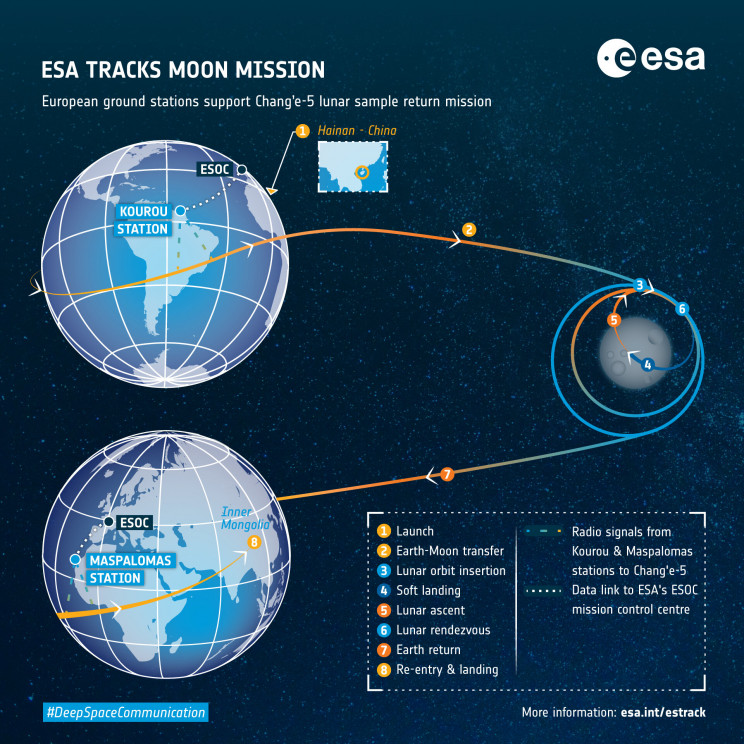After the U.S and Russia, China has become the third country to collect rock samples from the moon in over four decades. The last mission to the moon for collecting rocks took place in 1976.
The Chinese National Space Agency said they had launched the Chang’e 5 spacecraft to collect lunar rock samples, and as per the details, it took place from the Wenchang Spacecraft Launch Center on Monday. The Chang’e 5 is due to return to earth in mid-December if the mission goes according to the plan.
One of the most powerful launchers was used to launch the Chang’e 5 to space. It is called the Long March 5 heavy-lifter rocket and is the third most powerful launcher after United Launch Alliance’s Delta 4 and SpaceX’s Falcon 9 Heavy launchers. The lunar rock collecting mission is complex; however, after the recent successful launches to space, the CNSA’s confidence is high.
The Chang’e 4 launched previously by the CNSA was also a success as it landed a moon rover on the far side of the moon. Given these recent stats on the Chinese space agency, it won’t be wrong saying that this mission is most probably going to be another space success for China.
Mons Rümker has been determined as the landing spot for the Chang’e 5. The spot comes in the Oceanus Procellarum region on the near side of the moon.
The landing site was chosen on purpose as it contains rocks that are a lot younger than those collected by the U.S. and Russia about four decades ago. This will expectedly offer scientists a new data point to precisely measure the events in our solar system.

Chang’e 5 will go into orbit once it reaches the Moon. Its lander will then separate and go on a powered descent. Once it hits the lunar surface, it will assess its surroundings before the lunar rocks are obtained before returning to orbit and later joining the orbiter.
As per the CNSA’s plan, the spacecraft with the lunar samples will return to earth in a span of 23 days. It will land in the Siziwang Banner grassland, Mongolia.
Space exploration experts see it as an extraordinary expansion in lunar activity. Recent times have witnessed powerful nations launching more space missions than ever before. The U.S Artemis program to return astronauts to the moon, Chinese with their ambitious space exploration targets, and many new actors are spending on space ventures.


